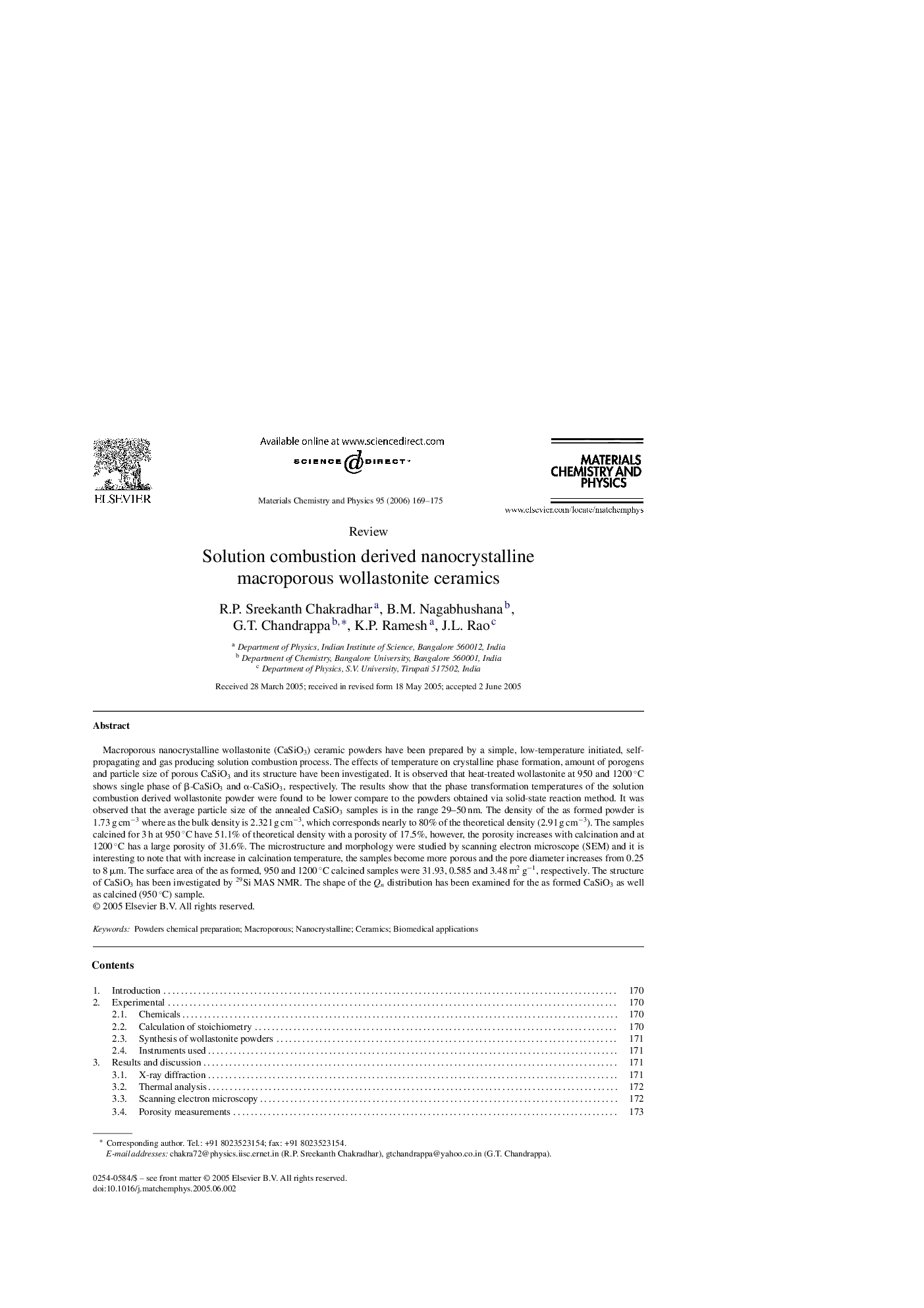| Article ID | Journal | Published Year | Pages | File Type |
|---|---|---|---|---|
| 1528115 | Materials Chemistry and Physics | 2006 | 7 Pages |
Macroporous nanocrystalline wollastonite (CaSiO3) ceramic powders have been prepared by a simple, low-temperature initiated, self-propagating and gas producing solution combustion process. The effects of temperature on crystalline phase formation, amount of porogens and particle size of porous CaSiO3 and its structure have been investigated. It is observed that heat-treated wollastonite at 950 and 1200 °C shows single phase of β-CaSiO3 and α-CaSiO3, respectively. The results show that the phase transformation temperatures of the solution combustion derived wollastonite powder were found to be lower compare to the powders obtained via solid-state reaction method. It was observed that the average particle size of the annealed CaSiO3 samples is in the range 29–50 nm. The density of the as formed powder is 1.73 g cm−3 where as the bulk density is 2.321 g cm−3, which corresponds nearly to 80% of the theoretical density (2.91 g cm−3). The samples calcined for 3 h at 950 °C have 51.1% of theoretical density with a porosity of 17.5%, however, the porosity increases with calcination and at 1200 °C has a large porosity of 31.6%. The microstructure and morphology were studied by scanning electron microscope (SEM) and it is interesting to note that with increase in calcination temperature, the samples become more porous and the pore diameter increases from 0.25 to 8 μm. The surface area of the as formed, 950 and 1200 °C calcined samples were 31.93, 0.585 and 3.48 m2 g−1, respectively. The structure of CaSiO3 has been investigated by 29Si MAS NMR. The shape of the Qn distribution has been examined for the as formed CaSiO3 as well as calcined (950 °C) sample.
